Bike computers are a staple of the triathlete’s gear armoury; in fact, they’re still omnipresent even when armed with a multisport watch.
That’s because by sitting on either your stem or bars, they’re easily seen no matter what speed you’re riding at. Or they should be...
What should you look for in a bike computer?
In general, the larger the screen size, the easier the info is to read, though pixelated digits or a small font often mean that’s not the case. This is key if you’re relying on your computer for navigation so, when appropriate, check its resolution.
For the most marginal of gainers, obviously the larger the screen, the less aerodynamic a computer is, though that’s a minor sacrifice worth making if it’s easy to navigate via a touchscreen. This is especially important when wearing gloves. But large usually means more features and that means extra cost.
If you choose a GPS model, you’ll have to decide between a ‘backward-looking’ or ‘forward-looking’ model. Backward-looking are favoured by riders who tap into portals like Strava as they offer live data, plus detailed post-ride analysis.
‘Forward-looking’ features built-in maps to tick that navigational box, meaning additional storage and a larger screen. Of course, this all comes at an extra cost.
More expensive computers should also feature Bluetooth as standard, making it easy to sync your data to your smartphone for ride analysis.
More affordable models strip features right down but don’t let that put you off – for many, speed and distance is enough.
Read on for our complete list of the best bike computers for triathlon.
The best bike computers for triathlon in 2022
Wahoo Elemnt Bolt
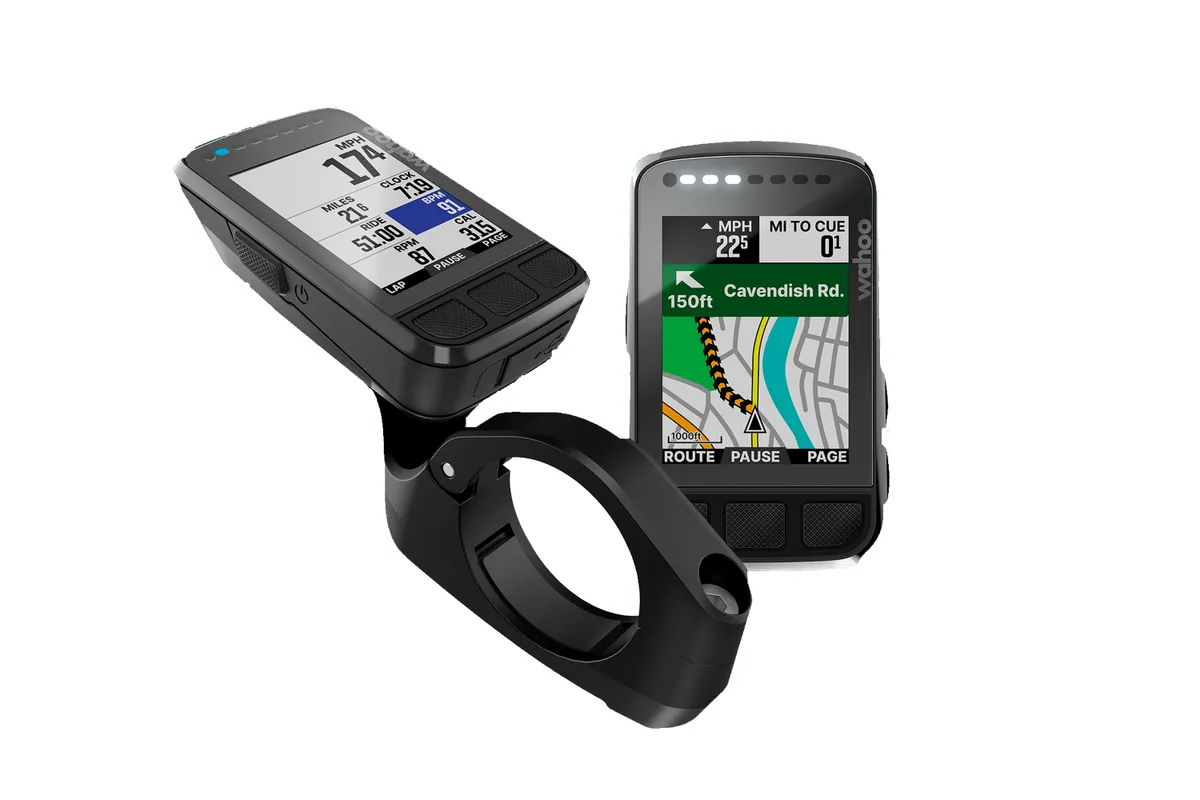
- £249.99
If there’s one thing that any piece of fitness tech needs to be, it’s easy to use. Fortunately, Wahoo’s new 16GB Elemnt Bolt ticks that box with aplomb.
From the app, you can easily import GPX files, review previous rides, upload rides to compatible apps like Strava, and customise the data fields that your device displays.
Updates to navigation are where you’d expect the Bolt to really show its value, and it’s fair to say it does the job really well. It’s easy to send routes to your device via Bluetooth and the GPS picks up signal in no time at all.
When following a route, turn-by-turn directions appear on screen, while piercing beeps let you know when you’re coming up to a turn (thankfully, these can be turned off). Roundabouts are shown by a circular symbol, with a number in the middle denoting which exit you should take.
Meanwhile, the new options to retrace your ride to the start or to take you to the start of a route are really handy and well thought-through additions.
The ‘take me to’ navigation function, which allows you to pinpoint a location on the map for the Bolt to then direct you to. This can be done in the app, or on the Bolt itself, so there’s no need to create and send over a route on an extra device via Wi-Fi or Bluetooth.
Like the original Bolt, battery life is impressive, with a six-hour ride only draining 35% of the claimed 15-hour reserve. If you like the look of the Wahoo Roam but fancy a smaller, more aerodynamic option, the new Bolt has it all and is £50 less, too.
Find out more in our full Wahoo Elemnt Bolt review.
Verdict: All you need and more; great navigation options and a clear screen.
Score: 90%
Garmin Edge 1040 Solar
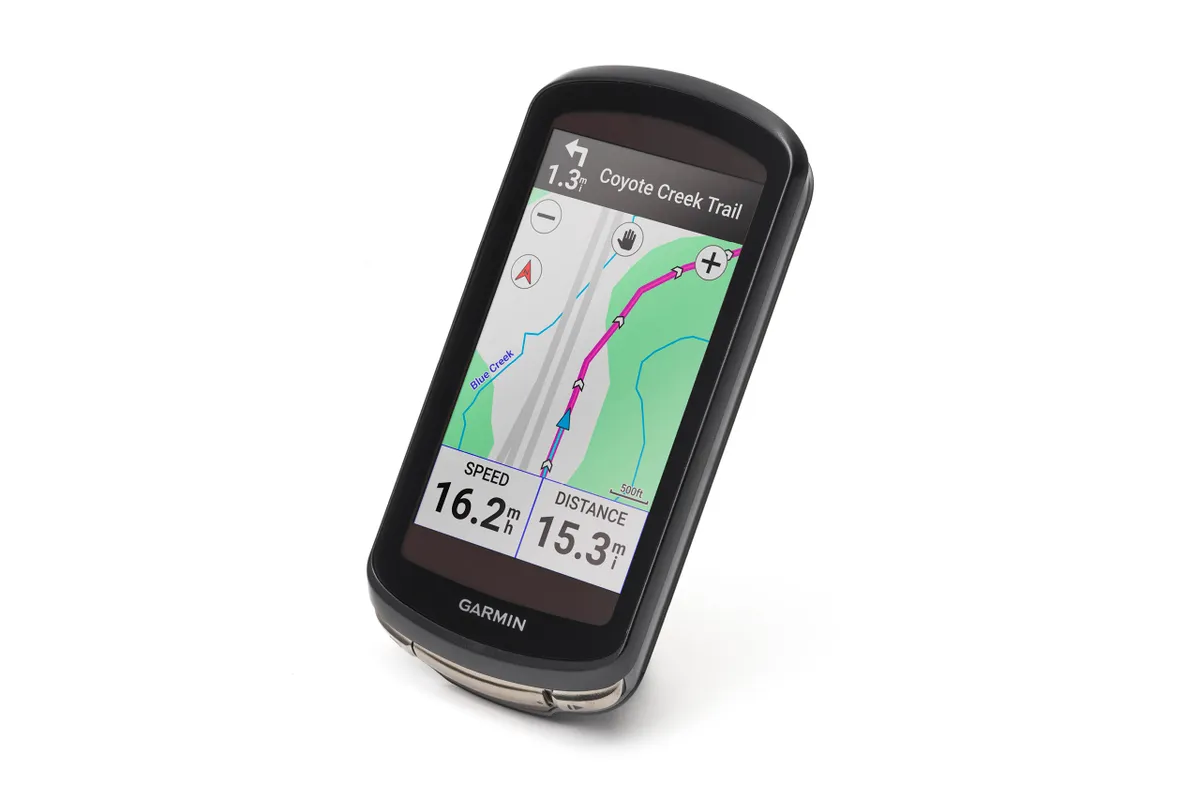
- £629.99
Given its price, you'd hope the Garmin Edge 1040 Solar has a lot going for it and, luckily, it does. Set up and connectivity with the Garmin Connect app and any sensors is painless, usability is impressive and the great touchscreen and buttons come together to form a winning combo.
It's easy to load up routes via Garmin Connect and navigation is as good as you'd expect, too, with the accurate multi-band GPS doing its job well. The turn-by-turn directions and off-course rerouting both hold up to scrutiny, too.
There's also a host of performance data, including recommended power targets, remaining stamina and training status, while you can even sync training plans. Battery life is up to 45 hours in heavy use, but you can get more out if it if you're using less features.
Read our full Garmin Edge 1040 Solar review here.
Verdict: Prohibitively priced, but it's among the best in class.
Score: 87%
Bryton Rider S800E
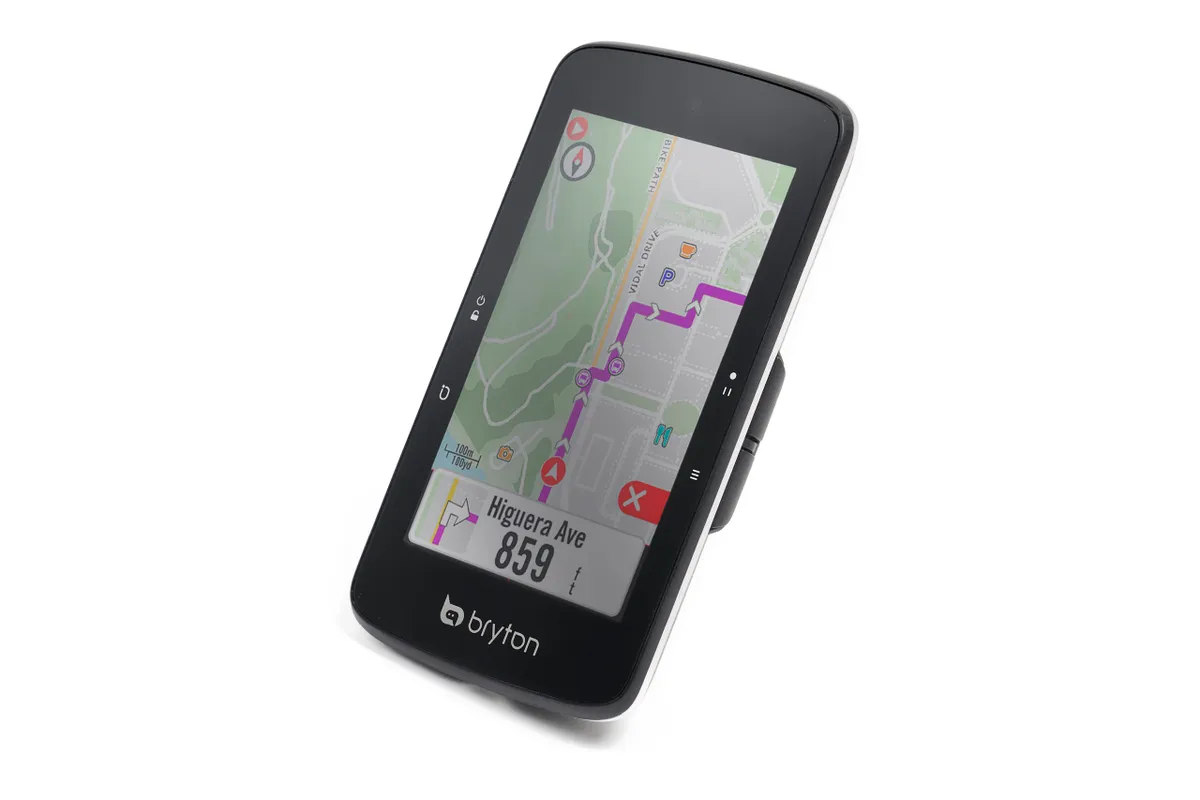
- £339.99
Bryton’s newest bike PC is full of real-time performance data and practical navigation features. A good pick for fans of big screens, the 3.4in colour touchscreen with ambient light sensor is crisp and clear, while the simple map graphics do the job in terms of navigation.
Routes can be created on compatible apps like Strava and uploaded via Bluetooth, with no reliance on a phone to record. The Bryton warns the rider of turns ahead with a distance countdown, though doesn’t differentiate between junctions and bends, while it’ll reroute you if you go off course.
Syncing additional sensors via ANT is straightforward, offering additional insight into heart rate, cadence and power, alongside built-in metrics of elevation, speed and temperature.
A handy climb-segment feature, which indicates the start of a climb (on pre-loaded routes), lets you know the duration and elevation remaining. Battery life is up to 36 hours.
Verdict: Does the job, but is more expensive than decent alternatives.
Score: 82%
Wahoo Elemnt Roam
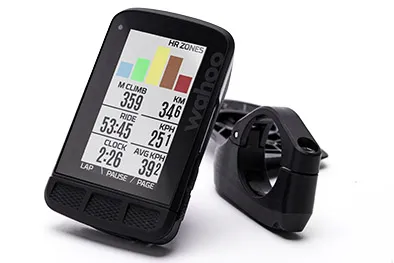
- £299.99
Wahoo’s trademark is usability, and that includes this impressive palm-sized unit. Mounting and data pairing are simple – download Wahoo’s app on your smartphone and connect to your head unit via a QR code. You can then configure up to 11 data fields on a page.
The intuitive interface is a big sell – as is viewability. The 2.7in colour display is top notch, with a sensor adjusting brightness when riding indoors or out. (Regarding the former, it syncs with Wahoo’s KickR.)
This computer’s all about navigation, and you can follow routes you’ve uploaded via the Wahoo app or plug in a destination and follow the directions (a minor issue is the rerouting feature, which isn’t always the most direct). The Roam also integrates with Strava, Training Peaks and Today’s Plan for Live Segments and structured workouts. Battery is 17hrs.
Verdict: Pricey, but a strong and usable competitor to Garmin.
Score: 85%
Stages Dash L200
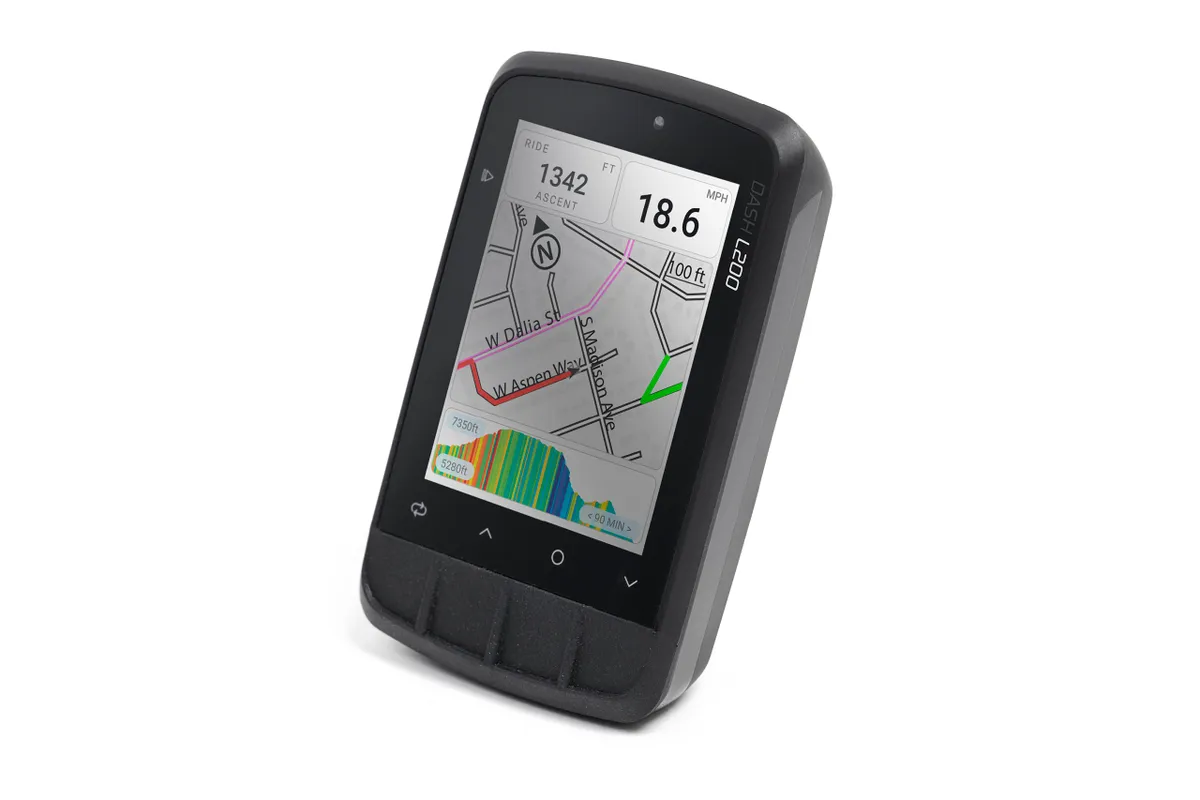
- £289
The Dash L200 does a lot well. The 2.7in screen is bright, GPS pick-up is accurate and pairing with a phone is easy. The button controls are also user-friendly, even with gloves, while adding sensors is straightforward and can be done via ANT or Bluetooth.
Navigation is also decent. You can create a route in the Stages app, import one from third-party apps like Strava or transfer a GPX via USB, but only the former will include turn-by-turn instructions. There’s plenty of data at your disposal while riding, including power and heart rate if sensors are connected. We’re a fan of the optional drink/eat reminders, too.
Unfortunately, the only web-based software available is the subscription-only Stages Link website, which we felt was in need of an update, as syncing it with our app and device was less than seamless. Battery life is up to 10hrs in standard mode and 18hrs in reduced power mode.
Verdict: Bright screen and decent navigation, but not as slick as others.
Score: 74%
Polar M460
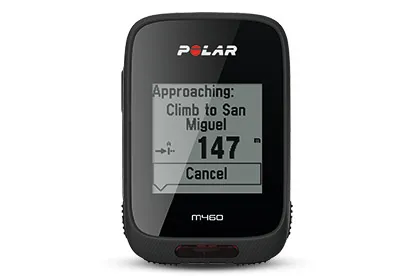
- £154
The first thing that strikes is the large size of the M460, especially compared to the Garmin below. Despite this, it’s not as clear to see on the fly. That mild lack of clarity sums up a solid computer.
GPS pick-up proves swift and there’s the Strava Live feature, which tells you when a segment is approaching and then, in real time, gives you your results (it includes a 60-day trial of Strava Summit). There’s a wealth of training features, yet you’ll need the HR package that’s £199.50.
It’s worth the extra spend to tap into common Polar hits such as a 5min fitness test, training-load feedback and session planning, all analysed further via Polar’s usable Flow app. Power metrics are available, but you’ll need a power meter. Battery is 15-16hrs.
Verdict: A competent but unspectacular bike computer.
Score: 78%
Garmin Edge 130 Plus
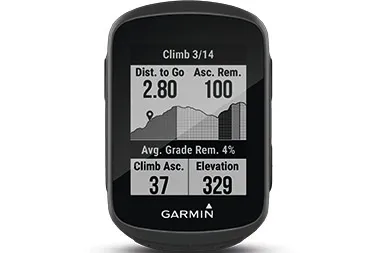
- £169.99
The standout feature of the Edge 130 Plus is the training plans section, where you can wirelessly send workouts from Garmin Connect and third-party apps (i.e. Training Peaks). It’s a smart feature for making every session count.
That training detail stretches to the ClimbPro feature where you can see the remaining ascent and gradient when following a pre-loaded route. Beyond gauging your effort, it’s a useful addition to plan fuel intake.
The Edge 130 Plus also comes with Incident Detection, and there’s MTB Dynamics for those of you who boost fitness via mountain biking. As for the basics, satellite pick-up is adequate and the interface is crisp. Battery life’s up to 12hrs and the price rises to £219.99 with HR strap.
Verdict: A superb and innovative training tool at a good price.
Score: 88%
Lezyne Super Pro GPS
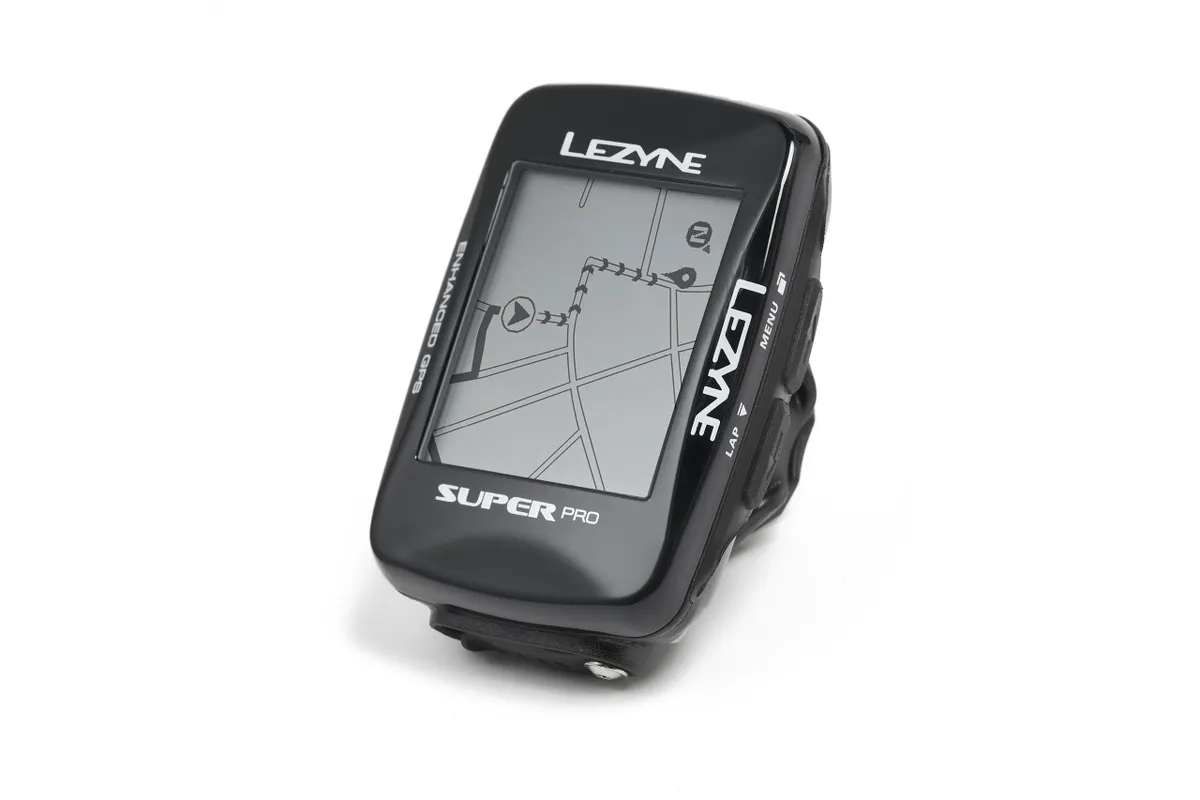
- £135
At sub-£150, Lezyne’s Super Pro GPS is by far the cheapest pick on test. In terms of navigation, routes can be made via the Lezyne Root website and GPS Ally app. There’s also the function to navigate to any destination, the route created can then be sent to the device via Bluetooth to follow.
Sensor connectivity’s lightning quick and accurate. We liked the addition of side buttons rather than delicate touchscreen navigation on the go, but the buttons proved stiff and temperamental to use.
We know bike gadgets can be a bit of an information minefield, so we liked the helpful resources provided through Lezyne’s YouTube channel. Saying that, navigation was a bit of a struggle, the unit often freezing when we tried to switch between data fields and the map when in motion.
But the simple, black and white 1.6in screen was easy to read in all conditions, with a backlight useful when riding in low light conditions.
Verdict: Good sensor connectivity but struggles with navigation.
Score: 68%
Bontrager RideTime Elite
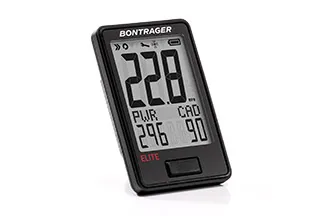
- £54.99
If you’re a fan of Strava and can’t pedal without generating a wad of data, this affordable model from Trek’s component arm isn’t for you. It lacks GPS, so no routes or navigation. USB is also absent; instead, it runs on a slimline battery.
It features ANT+, however, so you can connect with respective sensors to measure standards such as cadence, speed and power. Yet its most basic package comes with no sensors at all, meaning an extra £30-plus outlay required for, at the very least, Bonty’s DuoTrap digital speed-and-cadence sensor.
That’s when things turned around. It’s easily paired via the sole front button. That info’s then presented vividly – the clear display really easy to view on the fly.
Verdict: Solid but would be nice to come with at least a sensor.
Score: 74%